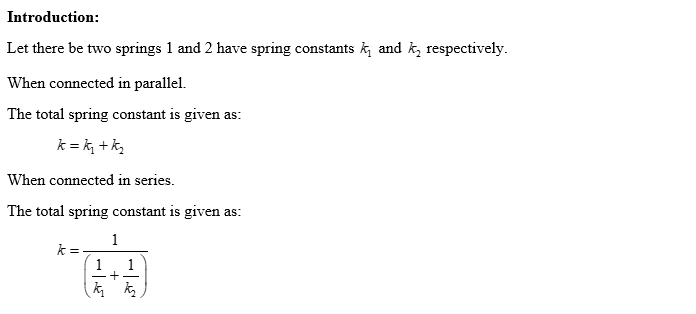How does the tension per unit length resulting from connecting N identical springs end-to-end (or “in series”) compares with the tension resulting from connecting them in parallel (say in comparison to a single spring of the same type and length)? In series In parallel A. Tension increase by N Tension decreases by 1/N B. Tension decrease by N Tension increases by 1/N C. Tension increase by 1/N Tension decreases by N D. Tension decrease by 1/N Tension increases by N E. No change No change
How does the tension per unit length resulting from connecting N identical springs end-to-end (or “in series”) compares with the tension resulting from connecting them in parallel (say in comparison to a single spring of the same type and length)? In series In parallel A. Tension increase by N Tension decreases by 1/N B. Tension decrease by N Tension increases by 1/N C. Tension increase by 1/N Tension decreases by N D. Tension decrease by 1/N Tension increases by N E. No change No change
Related questions
Question
How does the tension per unit length resulting from connecting N identical
springs end-to-end (or “in series”) compares with the tension resulting from connecting them in parallel (say in comparison to a single spring of the same type and length)?
In series In parallel
A. Tension increase by N Tension decreases by 1/N
B. Tension decrease by N Tension increases by 1/N
C. Tension increase by 1/N Tension decreases by N
D. Tension decrease by 1/N Tension increases by N
E. No change No change
Expert Solution
Step 1

Step by step
Solved in 3 steps with 3 images
